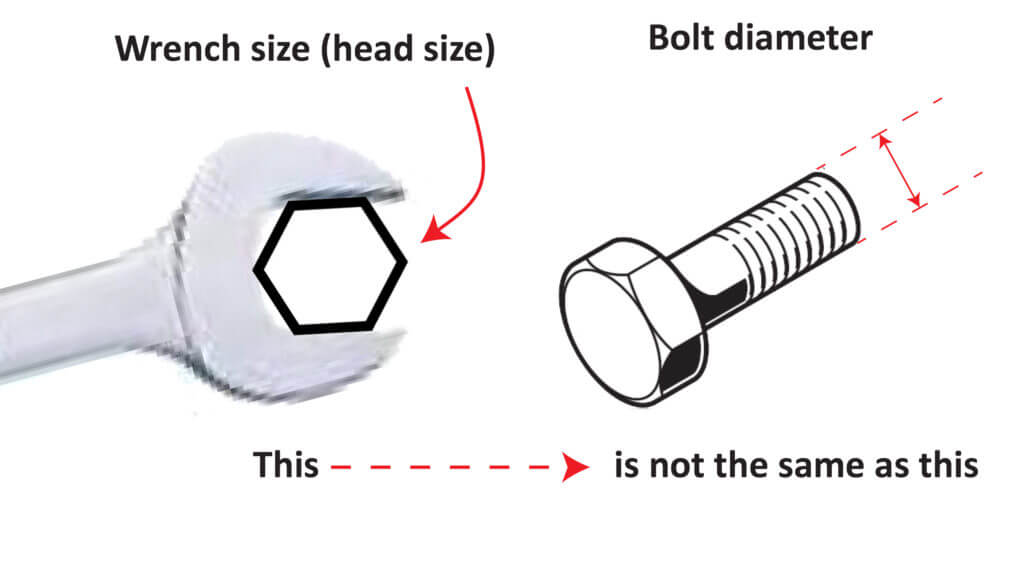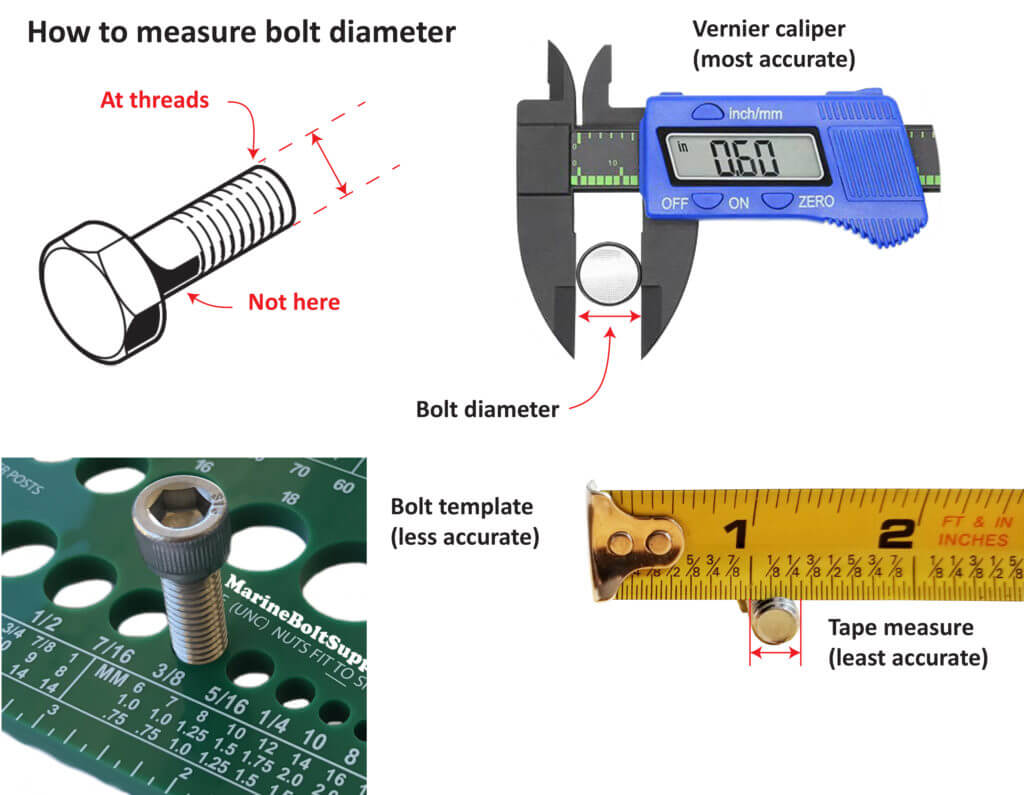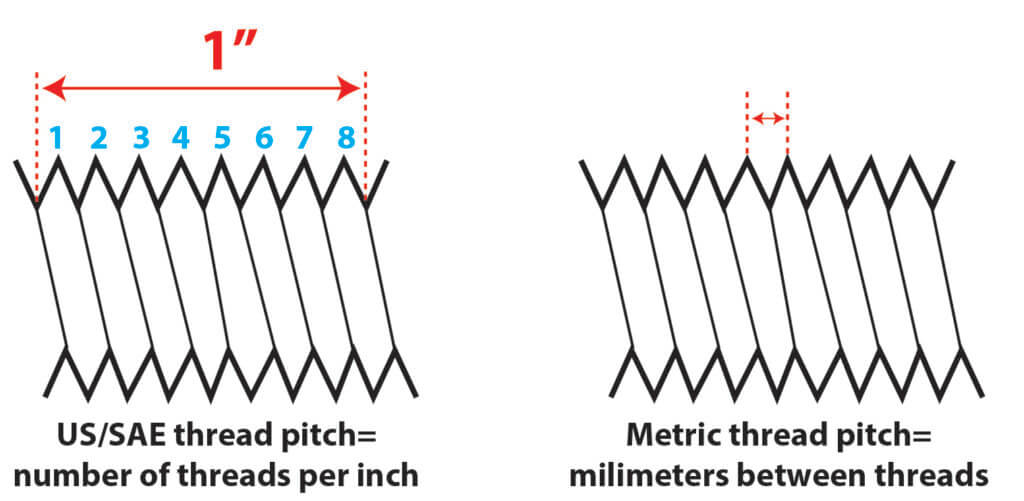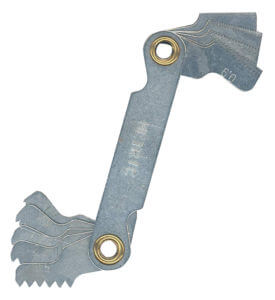How to measure a bolt
Measure bolts for automotive use
Here’s how to measure bolts.
A warning about measuring bolt size
Bolt shank diameter and thread pitch are the two most important measurements. Measuring bolt shank diameter is the same for both metric and SAE bolts; it’s measured from the threads. But thread pitch is different. See the next paragraph. Wrench size refers to the hex head. Wrench size is where most DIYers get messed up. The wrench size is NOT the bolt shank diameter size. In other words, a bolt that requires a 10mm socket does not have a bolt diameter of 10mm!

How to measure shank diameter
The best way to measure shank diameter is with a Vernier caliper. Simply slide the caliper around the threaded portion of the bolt and read the scale. You can buy a Vernier caliper for less than $10 from Amazon or any home center store. Don’t have one? You can use a bolt template. Don’t a template but have a nut for the bolt? Take that to the hardware store.

What is thread pitch?
The definition of thread pitch is different for SAE and metric fasteners. For US/SAE threaded fasteners, measure the number of threads per inch. For metric fasteners, measure the distance between two threads in millimeters.

How to measure threads
Use a vernier caliper or a thread pitch gauge. Simply insert  the trial gauges into the threads until the gauge fits perfectly. Then read the pitch off the gauge.
the trial gauges into the threads until the gauge fits perfectly. Then read the pitch off the gauge.
Measure bolt length
Measure the bolt length from directly under the hex head to the tip of the bolt.
How bolt sizes are expressed
For US/SAE bolts
1/4″ ‐ 20 x 3″ means 1/4″ bolt diameter with 20 threads per inch (TPI) and 3″ length
For Metric bolts
M10 x 1.0 x 30 means Metric 10mm bolt diameter with 1mm pitch and 30mm length
What’s the difference between coarse and fine bolts?
A coarse bolt has fewer threads per inch (US/SAE) or a wider gap between two threads (metric). On the flip side, a fine thread has more threads per inch or a shorter gap between two threads.
Advantages of fine bolt thread
• For two bolts of the same diameter and length, the finer the thread pitch, the stronger the bolt. Fine threads have more surface area in contract with the mating threads and have a larger shank diameter (fine threads aren’t cut as deeply into the shaft).
• Fine thread bolts allow for more adjustment where an adjustment is needed
• Easier to tap fine threads because they don’t cut as deeply into the bolt shaft or the mating material.
• Fine threads require less torque to develop the same preload as a coarse threaded bolt.
• Fine threads don’t loosen as easily as coarse threaded bolts
Disadvantages of fine bolt thread
• Since more material is in contact with the mating surface, they’re more susceptible to galling.
• Fine thread bolts are easier to strip during initial engagement.
• A fine thread bolt must be longer than a coarse thread bolt to achieve the same holding power.
©, 2019 Rick Muscoplat
Posted on by Rick Muscoplat